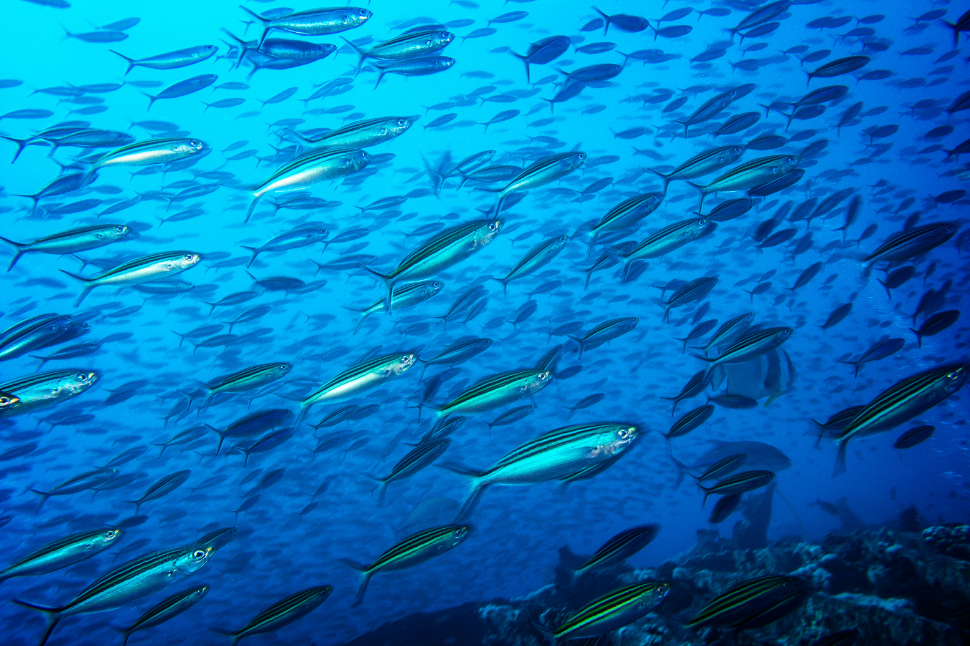In What Situations Would Mark and Recapture Work Best?

Using the Mark and Recapture (or “Capture-Mark-Recapture”) technique, biologists, researchers or wildlife management personnel use various methods to capture animals and subsequently mark them. The methods used for marking vary depending upon the species: birds are usually marked with a small aluminum ankle band, animals with shells (e.g., turtles, mollusks) with waterproof paint, butterflies with labels taped to their wings and large mammals with collars. Fish can be marked by notching their fins or with tags if they are large; amphibians can be marked with nontoxic dyes injected under the skin.1
The marked animals are immediately released as close as possible to the collection site. After a designated period of time, animals from the same collection site or area are trapped again, and the number of new captures and recaptures are recorded. The ratio of newly captured to recaptured animals is used to estimate the overall population.
Difficulties in Sampling Animals
All animals are mobile to one degree or another, but some are far more mobile than others. For example, fish in a closed pond may be mobile, elusive and difficult to catch, but they’re still in a closed system, as opposed to sparrows in an urban area. Obviously, the immigration and emigration of individual animals in and out of a study site make it difficult to ascertain what area a population actually occupies. Thus, imprecise definitions of the space occupied by a population often forces an arbitrary designation of survey groups.2
It is for these reasons that the Mark and Recapture method works best when attempting to count large populations of relatively immobile animals in a limited area—preferably in a closed system.1 This facilitates less counting, and since the animals are in a closed system there is less chance to have unusual distributions. Mark and Recapture also works very well in the case of large populations of animals that are elusive and move around a lot. Though individuals may be difficult to catch, the samples allow for a better mix of tagged (recaptured) individuals with the rest of the population, leading to more accurate results in subsequent samples.2
Interested in learning more about safe capture? The San Diego Zoo now offers courses in safe capture techniques and best practices. Learn reliable, safe, and effective techniques for the species you work with and the scenarios you encounter!
2Tilling K, Sterne JAC. Capture-recapture models including covariate effects. Am J Epidemiology, 1999;149:392–400.
About NexGen Pharmaceuticals
NexGen Pharmaceuticals is an industry-leading veterinary compounding pharmacy, offering sterile and non-sterile compounding services nationwide. Unlike other veterinary compounding pharmacies, NexGen focuses on drugs that are difficult to find or are no longer available due to manufacturer discontinuance or have yet to be offered commercially for veterinary applications, but which still serve a critical need for our customers. We also specialize in wildlife pharmaceuticals, including sedatives and their antagonists, offering many unique options to serve a wide array of zoo animal and wildlife immobilization and anesthesia requirements.
Our pharmacists are also encouraged to develop strong working relationships with our veterinarians in order to better care for veterinary patients. Such relationships foster an ever-increasing knowledge base upon which pharmacists and veterinarians can draw, making both significantly more effective in their professional roles.
Disclaimer
The information contained in this blog post is general in nature and is intended for use as an informational aid. It does not cover all possible uses, actions, precautions, side effects, or interactions of the medications shown, nor is the information intended as medical advice or diagnosis for individual health problems or for making an evaluation as to the risks and benefits of using a particular medication. You should consult your veterinarian about diagnosis and treatment of any health problems. Information and statements have not been evaluated by the Food and Drug Administration ("FDA"), nor has the FDA approved the medications to diagnose, cure or prevent disease. Medications compounded by NexGen Pharmaceuticals are prepared at the direction of a veterinarian. NexGen Pharmaceuticals compounded veterinary preparations are not intended for use in food and food-producing animals.
NexGen Pharmaceuticals, LLC does not recommend, endorse or make any representation about the efficacy, appropriateness or suitability of any specific dosing, products, procedures, treatments, services, opinions, veterinary care providers or other information that may be contained in this blog post. NEXGEN PHARMACEUTICALS, LLC IS NOT RESPONSIBLE NOR LIABLE FOR ANY ADVICE, COURSE OF TREATMENT, DIAGNOSIS OR ANY OTHER INFORMATION, SERVICES OR PRODUCTS THAT YOU OBTAIN THROUGH THIS BLOG POST.



